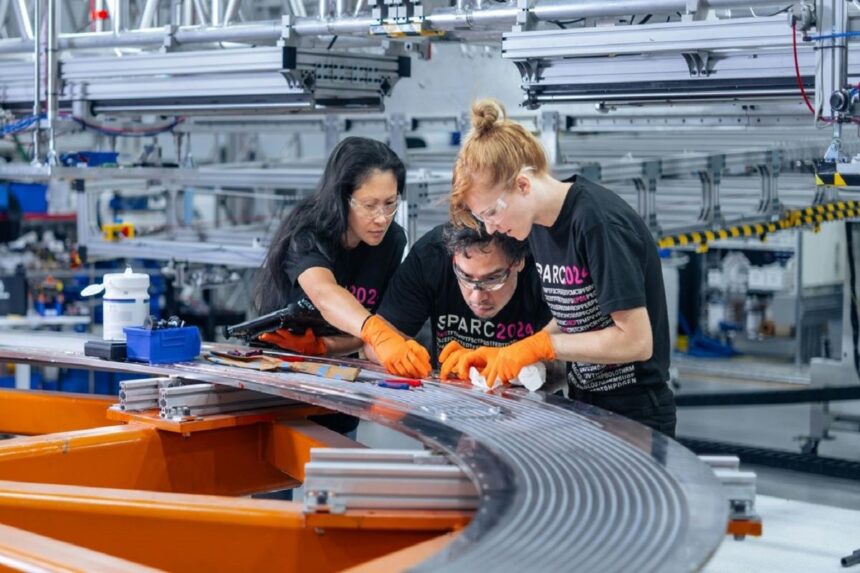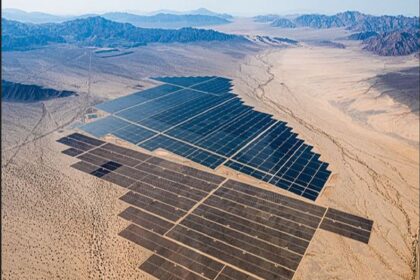Ambitious Plans for the Future of Energy
Commonwealth Fusion Systems (CFS), an MIT spinout, is set to build the world’s first grid-scale fusion power plant in Chesterfield County, Virginia. The groundbreaking project, called the ARC power plant, is expected to produce 400 megawatts of electricity and aims to go online by the early 2030s. This ambitious endeavor will take place at the James River Industrial Park near Richmond through a collaborative effort with Dominion Energy Virginia, although no financial partnership has been disclosed.
What Makes Fusion Power Revolutionary?
Nuclear fusion, the process that powers the sun, has the potential to revolutionize energy production. Unlike nuclear fission, fusion offers several key advantages:
- Zero Emissions: Fusion produces no greenhouse gases, contributing to cleaner energy.
- Safety: The process eliminates the risk of nuclear accidents associated with fission.
- Abundant Fuel Sources: Fusion relies on hydrogen and lithium isotopes, which can be extracted from seawater and other widely available sources.
- No Toxic Waste: Unlike fission, fusion does not generate long-lived radioactive waste.
Despite its promise, fusion has eluded practical implementation since research began in the 1940s. To date, no system has achieved net power, where the energy output exceeds the energy input.
Progress Toward Commercial Fusion Energy
CFS, founded in 2018, has raised over $2 billion to bring its fusion technology to market. The company’s roadmap includes building a smaller test system called SPARC in collaboration with MIT’s Plasma Science and Fusion Center. Scheduled for completion in 2027, SPARC aims to be the first fusion device to produce more energy than it consumes—a critical milestone for the ARC power plant’s feasibility.
“This is a historic moment. In the early 2030s, all eyes will be on the Richmond region and more specifically Chesterfield County, Virginia, as the birthplace of commercial fusion energy,” said Bob Mumgaard, CEO and co-founder of Commonwealth Fusion Systems. “Virginia emerged as a strong partner as they look to implement innovative solutions for both reliable electricity and clean forms of power. We are pleased to collaborate with Dominion Energy.”
The Role of Dominion Energy in the Project
Dominion Energy Virginia, a major utility provider in the state, will play a crucial supporting role in the ARC project. Edward H. Baine, president of Dominion Energy Virginia, expressed enthusiasm for the collaboration:
“Commonwealth Fusion Systems is the clear industry leader in advancing the exciting energy potential of fusion. Our customers’ growing needs for reliable, carbon-free power benefit from as diverse a menu of power generation options as possible, and in that spirit, we are delighted to assist CFS in their efforts.”
Fusion Energy: A Solution to Growing Power Demands?
The announcement comes at a time when the demand for electricity is surging, particularly in Virginia, which has become the global hotspot for data centers. A recent state report warned that the rapid expansion of data centers could strain the power grid, making it challenging to scale generation and transmission infrastructure.
As artificial intelligence (AI) and cloud computing drive data center growth, the energy needs of these facilities are increasing exponentially. Fusion power has been touted as a potential solution to meet these demands sustainably. Several fusion companies, including Commonwealth Fusion Systems, are pitching their technology as a way to support this growth.
Competitive Landscape: Helion Energy and Other Players
CFS is not alone in the race to commercialize fusion energy. Helion Energy, another prominent player, has gained attention for securing a power purchase agreement (PPA) with OpenAI. The deal includes a commitment to deliver 50 megawatts of fusion energy by 2028. Helion’s CEO, Sam Altman, has invested $375 million in the company, further highlighting the growing interest in fusion from the tech industry. Microsoft has also signed a PPA with Helion, emphasizing the broader appeal of fusion energy for tech giants.
Challenges Ahead for Fusion Technology
Despite recent advancements, significant challenges remain before fusion becomes a reliable energy source:
- Net Power Generation: Achieving net power is a prerequisite for commercial viability.
- Technological Complexity: The systems required for fusion are highly complex and unproven at scale.
- Cost: Building and maintaining fusion reactors is expensive, requiring substantial investment.
- Regulatory Hurdles: Compliance with safety and environmental regulations adds to the complexity of deployment.
FAQs About Fusion Energy and the ARC Project
What is the ARC power plant?
The ARC power plant is a 400MW grid-scale fusion power project by Commonwealth Fusion Systems, aiming to become the world’s first operational commercial fusion reactor.
How does nuclear fusion differ from fission?
Fusion combines hydrogen nuclei to form helium, releasing energy without producing toxic waste or the risk of meltdowns, unlike fission, which splits heavy atoms.
When will the ARC power plant be operational?
CFS plans to bring the plant online in the early 2030s, pending the success of its SPARC test system.
What are the potential benefits of fusion energy?
Fusion provides abundant, zero-emissions energy with minimal safety risks and no long-lived radioactive waste.
Why is Virginia a suitable location for this project?
Virginia offers strong infrastructure, a skilled workforce, and increasing energy demands driven by data center growth, making it an ideal partner for innovative energy projects.



















